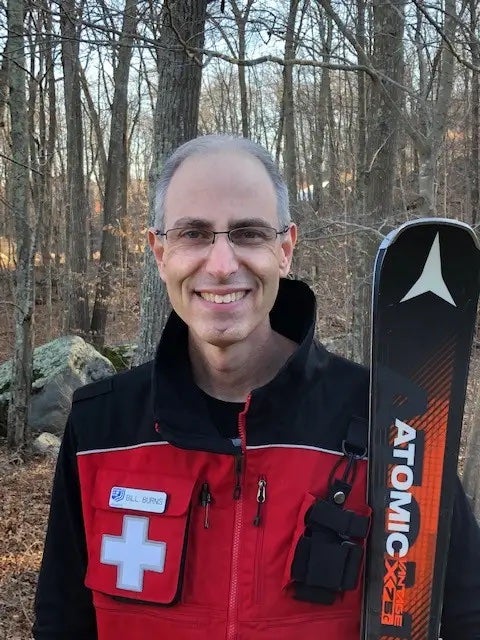The University of Rhode Island College of Health Sciences recently welcomed Assistant Professor William Burns to the college. Specializing in clinical and experiential education, Burns has joined the Department of Physical Therapy. Learn more about one of the College’s newest professors:
Education: DPT, University of St. Augustine for Health Sciences, San Marcos, Calif.; MS, physical therapy, Springfield College, Springfield, Mass.
Recent experience: Clinical Director, private practice, Choice Physical Therapy, LLC, Westerly, mainly practicing orthopedic sports medicine and therapy; Assistant Professor, physical therapy, Springfield College; Medical service corps Officer, U.S. Navy active duty (10 years) and Reserves (18 years and counting).
Teaching focus: Over the summer, Burns plans to co-teach human anatomy with Associate Professor James Agostinucci. This semester, Burns’ focus is on clinical education. He’s working with students in the College’s physical therapy clinic as part of the Integrated Clinical Experience. He will also be supervising physical therapy students in the University’s sports medicine department, giving them the opportunity to work directly with Division 1 athletes. Burns aims to further expand that kind of clinical experience for students.
“We want to be able to give our students experience in that environment, working with athletic trainers, team physicans, sports medicine physicians, and high-level division 1 athletes,” said Burns, an avid skier who serves on the ski patrol at Yawgoo Valley. “URI athletes’ treatment is done in the sports medicine department, so we’re looking to work alongside them and to support them where they need it. My focus is to design and supervise clinical experiences for students, utilizing the great assets and facilities we have right here on campus.”
Research focus: Burns focuses on post-surgical rehabilitation and utilization management in physical therapy. When a patient is prescribed physical therapy, often their length of treatment is governed by a third party the health insurance company hires to manage visits and contain costs. That containment is not always in the best interests of a patient’s long-term care.
“Oftentimes, the standards and criteria they use for that are not terribly sound, so it can leave the patient with a less than desirable number of visits or length of treatment that can negatively affect their outcome,” Burns said. “I’m interested in looking at some of the industry standards that these utilization management companies are using to determine length of treatment. They have some kind of algorithm that determines how many visits a patient gets. I want to investigate what was behind the criteria they use to make those decisions.”
Why URI?: “I always wanted to go back to teaching, and truthfully, I always had a desire to come to URI,” Burns said. “I think the program is great. The program size is one of the great features. We have amazing facilities and assets, both physical assets and staff. To be able to harness that and further integrate that into the clinical education component of our program is what I hope to develop going forward.”

